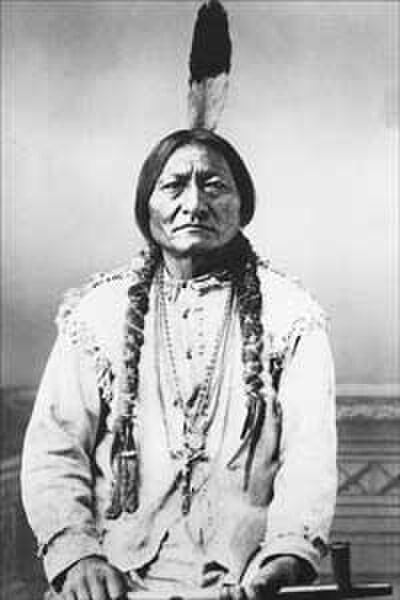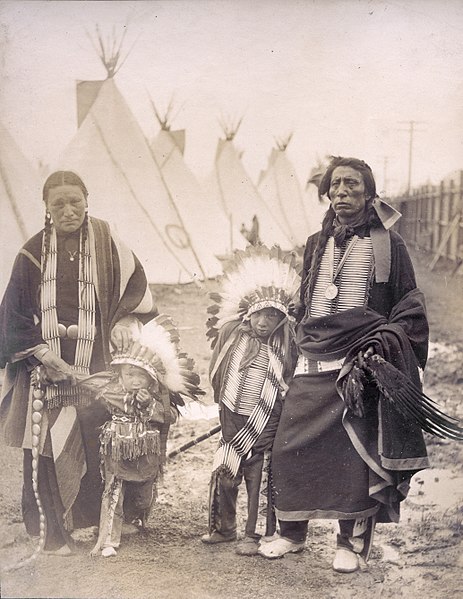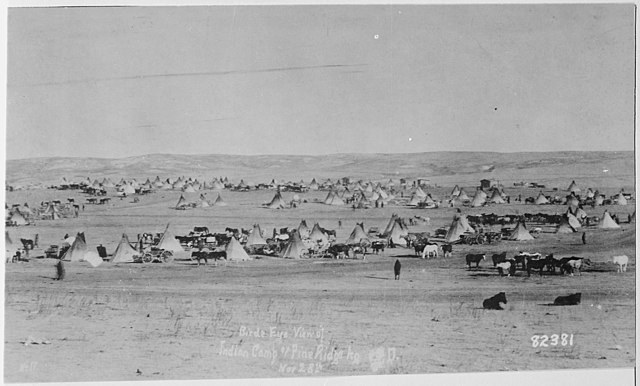The heyoka is a kind of sacred clown in the culture of the Sioux of the Great Plains of North America. The heyoka is a contrarian, jester, and satirist, who speaks, moves and reacts in an opposite fashion to the people around them. Only those having visions of the thunder beings of the west, the Wakíŋyaŋ, and who are recognized as such by the community, can take on the ceremonial role of the heyoka.
Ledger artwork by Lakota artist Black Hawk representing a dream of a thunder being. c. 1880
The Sioux or Oceti Sakowin are groups of Native American tribes and First Nations people from the Great Plains of North America. The Sioux have two major linguistic divisions: the Dakota and Lakota peoples. Collectively, they are the Očhéthi Šakówiŋ, or "Seven Council Fires". The term "Sioux", an exonym from a French transcription ("Nadouessioux") of the Ojibwe term "Nadowessi", can refer to any ethnic group within the Great Sioux Nation or to any of the nation's many language dialects.
Sitting Bull, a Hunkpapa Lakota chief and holy man, c. 1831 – December 15, 1890.
Chief Black Tail Deer and his family at the 1904 World's Fair
Thiyóšpaye at Pine Ridge, South Dakota, c. 1890
Ledger artwork by Lakota artist Black Hawk representing a heyókȟa, (dreamer of a Wakíŋyaŋ, thunder being), c.1880




